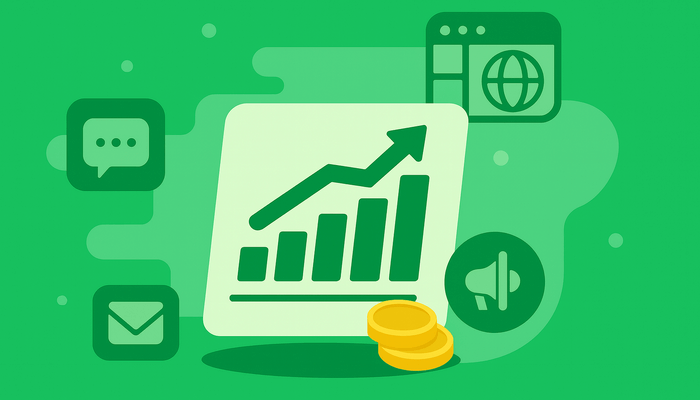
You spend weeks shaping the perfect piece of content. It’s smart, useful, and well-written. You hit publish and then wait. A few impressions, maybe a brief spike in traffic. Then silence. Why does strong content fail to perform? Often, the problem isn’t in what you’re saying. It’s in who sees it and how they get there.
In 2025, distribution matters more than ever. Many, even experienced professionals, may underestimate the importance of choosing a distribution platform.
Should your article go to LinkedIn or a syndication network? Will email get more traction than paid discovery? What if you’re using the right content but showing it to the wrong crowd?
Let’s talk about the most effective distribution platforms and try to understand which ones actually deliver return, and why.
Table of Contents
- What Are Content Distribution Platforms?
- How Content Distribution Platforms Work
- Content Distribution vs Content Marketing: Key Differences
- The 3 Types of Content Distribution Channels
- Top 13 Content Distribution Platforms: Expert Reviews and Analysis
- Content Distribution Platform Comparison Matrix
- How to Choose the Right Content Distribution Platform
- ROI Analysis: Measuring Content Distribution Success
- Advanced Content Distribution Strategies
- Future of Content Distribution: 2025 Trends and Beyond
- Content Distribution Security and Compliance
- Frequently Asked Questions About Content Distribution
- Conclusion
What Are Content Distribution Platforms?
So, first, let’s figure out what we’re dealing with. Content distribution platforms are places where your content meets the audience. Not just where you post it but where people find it, read it, and (if you’re lucky) act on it. It could be a LinkedIn feed, a newsletter in someone’s inbox, a promoted article, or a blog.
These platforms help move your content out of your bubble and into the real world. Some you own, some you borrow, some you pay for. The point is simple: it’s not enough to create good content. You have to get it in front of people who care.
How Content Distribution Platforms Work
Now, let’s take a closer look at how it all actually works. It might seem easy at first glance. You’ve got content; you need people to see it. However, the whole process has more steps than most expect.
- Take a look at the options available.
- Choose a platform that fits.
- Polish up the copy and resize visuals.
- Pop in the text, links, media, and whatever needs to be there.
- Drop it now or let it go live later, depending on the plan.
- Keep an eye on clicks, views, or replies as they come in.
- Check the numbers and see what landed well.
- Switch things up based on what you’ve learned.
- Share again, try a new channel, or aim at a different crowd.
At first, this might seem like a simple routine. However, be ready that once you get into it, all sorts of details start to matter. Timing, format, tone, platform quirks, and audience habits have a say in what works and what falls flat.
Content Distribution vs Content Marketing: Key Differences
Before you start planning your campaigns, it helps to know what’s what. Content marketing and content distribution often go together, but they cover very different ground. One builds the message, the other moves it. When you mix them up, things fall flat fast. So, let’s break it down side by side.
| Content Marketing | Content Distribution |
| Creates the story and message | Shares content across different platforms |
| Focuses on value, tone, and clarity | Focuses on timing, reach, and format |
| Builds blog posts, videos, or guides | Uses social, email, ads, or partners |
| Happens before content goes live | Kicks in after publishing is done |
| Helps grow trust and brand connection | Helps grow traffic and visibility |
| Tailors content to the audience’s needs | Places content where the audience already is |
The 3 Types of Content Distribution Channels
Before you dive into tools or start writing another post, take a second to figure out where you’ll actually share it. There are three main types of content distribution channels. Each works in its own way, and each has its place. Once you get the hang of how they fit together, the whole thing starts to click.
Owned Media Distribution Platforms
This is your home turf. You’re in charge here. Think website, blog, newsletter, podcast, anything that lives under your name and control. You don’t need to ask for permission or pay anyone to publish. If you’ve got something new, just pop it in and hit send.
The tricky part? Getting people to come to it. But once they do, you don’t have to fight for space or chase clicks because you already own the room.
Earned Media Distribution Strategies
You’re not paying for space, you’re earning it. Someone shares your article. A partner links to your guide. A journalist mentions your brand. You cannot fully plan it, but you can nudge it along: pitch stories, team up with others, write things people want to pass around.
Paid Media Distribution Networks
Now we’re talking about the budget. You pay, they show your content. It could be a sponsored post, a native ad, or a promoted story on someone else’s site. You choose who sees it, when, and where. The upside? It’s fast and targeted. You don’t sit around hoping someone stumbles upon your content. You put it right in front of them.
Top 13 Content Distribution Platforms: Expert Reviews and Analysis
Alright, this is the part you’ve probably been waiting for. We’ve talked through the groundwork. Now let’s get into the actual tools you can use. Below you’ll find real platforms people rely on every day to push content out into the world.
These platforms move fast and get content in front of people without much delay. You post, they scroll, and things either catch fire or disappear. If you’re active, know your audience, and post with purpose, social media is a great place to stay visible and keep things moving.
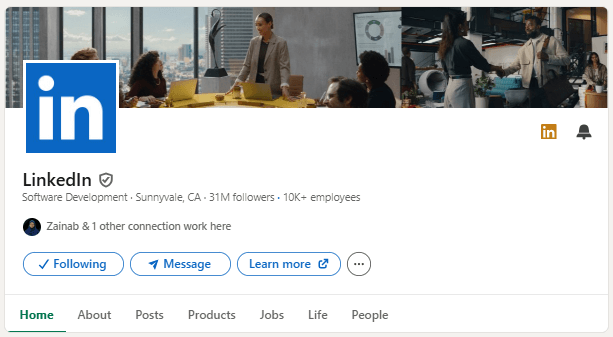
Let’s start our conversation about platforms with LinkedIn. It is where work talk happens. If your content speaks to professionals or decision-makers, this is your spot. It’s built for updates, insights, and connections that actually lead somewhere.
Key features:
- Native article publishing
- Company pages and newsletters
- Precise job- and industry-based targeting
- Lead gen forms for gated content
Pros:
- Great for long-form B2B content
- High organic reach for personal posts
- Strong targeting in paid campaigns
- Built-in credibility
Cons:
- Engagement drops if you post too often
- Feeds favor individuals over company pages
- Ads get pricey fast
Pricing:
- Free personal and company accounts
- Paid ads: start around $5/day
- Premium Business plans: from $59.99/month
User reviews: 4.3/5

Still huge, still sticky. Facebook works well if you’ve got a tight-knit audience or want to keep people in the loop. It is great for groups, updates, events, and staying on your followers’ radar.
Key features:
- Facebook Groups
- Live video and stories
- Boosted posts and detailed targeting
- Community management tools
Pros:
- Good for nurturing repeat readers
- Group posts often get solid reach
- The ad system is flexible and mature
Cons:
- Organic reach is way down
- Content lifespan is short
- Engagement can be unpredictable
Pricing:
- Free pages and groups
- Boosted posts: from $1/day
- Ads: flexible, but can add up fast
User reviews: 4.2/5
X (Formerly Twitter)
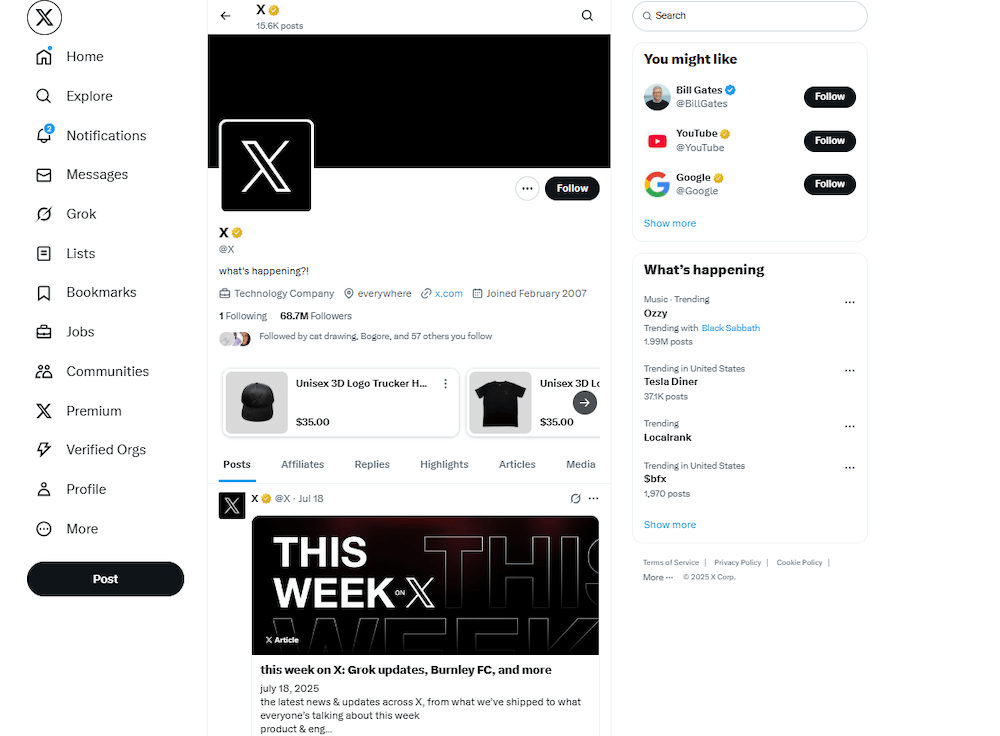
This is where things break, buzz, or crash fast. If your content is timely, reactive, or tied to trending topics, Twitter (or X) helps you jump into the moment.
Key features:
- Threads and polls
- Spaces (live audio)
- Real-time search and hashtags
- Paid options
Pros:
- Easy to join conversations
- Great for announcements and opinions
- High-speed content cycle
Cons:
- Visibility drops fast
- Audience reach is unstable
- Platform changes are frequent
- Not ideal for long-form content
Pricing:
- Free basic use
- Premium: from $8/month
- Ads: flexible daily budget
User reviews: 4.3/5
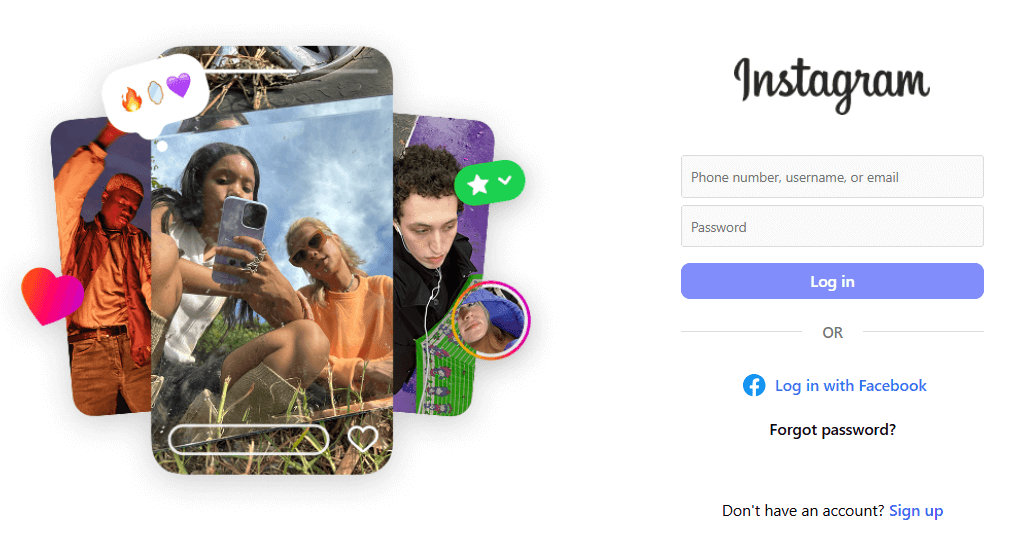
If your content pops visually (photos, reels, infographics), Instagram makes it shine. It’s built for scroll-stopping moments, short captions, and casual updates.
Key features:
- Reels and Stories
- Link in bio tools
- Shopping tags and product links
- Creator tools and insights
Pros:
- High visual impact
- Good for behind-the-scenes or product teasers
- Easy to reach younger audiences
- Stories offer low-effort engagement
Cons:
- Link sharing is limited
- Organic reach is up and down
- Reels now dominate feed space
- Harder to drive website traffic
Pricing:
- Free profile
- Boosts and ads: from $1/day
User reviews: 4.5/5
YouTube
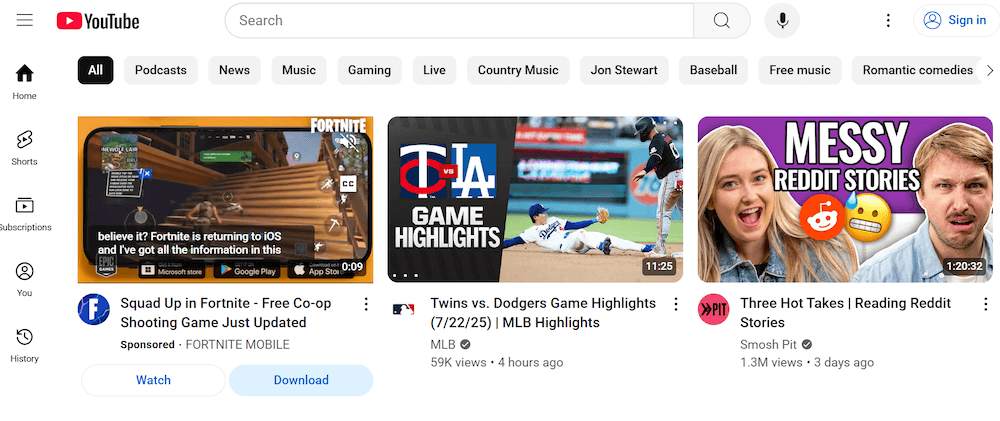
Of course, YouTube is still the king of video. The platform is great for clips, explainers, or anything worth watching from start to finish.
Key features:
- Channels and playlists
- Shorts (short-form vertical videos)
- Live streams and premieres
- SEO tools for discoverability
Pros:
- Long content lifespan
- Strong search visibility
- Monetization options available
Cons:
- Video production takes time
- Growth can be slow without consistency
- Algorithm shifts can hit hard
- Harder to build a community than social app
Pricing:
- Free to upload
- Ads: cost depends on audience targeting
- Premium features for viewers: from $13.99/month
User reviews: 4.6/5
Email Marketing Platforms
Does it seem to you like an old-school? Be sure, it still works when done right. These platforms help you stay in touch without being pushy. You write once, send to many, and keep your brand top-of-mind without fighting for space in a crowded feed.
Mailchimp
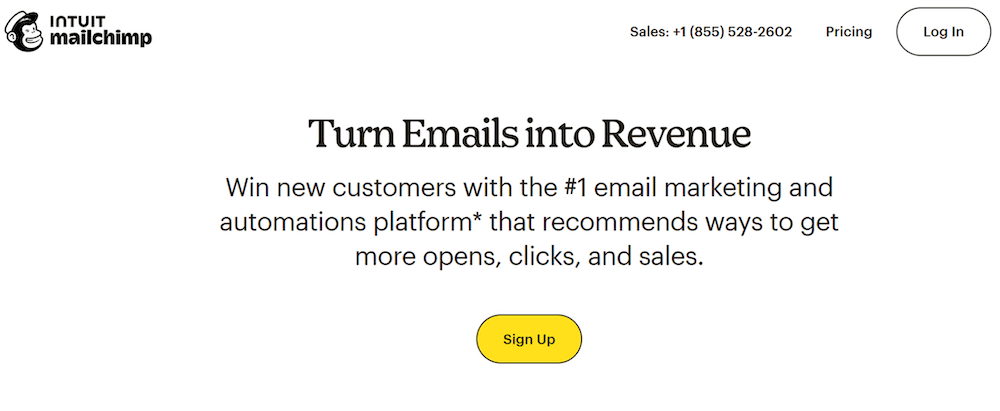
You can use this tool for sending emails without getting tangled up in tech. It could be a great option if you just start out or run a lean team. The platform is very easy to use, has many automated processes, so you can work independently, without the need to hire a full-time specialist.
Key features:
- Drag-and-drop email builder
- Basic automation flows
- Built-in templates
- Simple reporting dashboard
Pros:
- Easy to set up and run
- Clean interface
- Free plan available
Cons:
- Automations feel a bit limited
- Templates can look a bit plain
- Pricing jumps with list size
Pricing:
- Free up to 500 contacts
- Essentials: from $13/month
- Standard: from $20/month
- Premium: from $350/month
User reviews: 4.3/5
HubSpot

HubSpot is a whole ecosystem. But if you want email to plug into your CRM, sales funnel, and content all in one place, this is the tool to look at.
Key features:
- Visual automation builder
- Smart lists and dynamic content
- Built-in CRM
- Advanced analytics
Pros:
- Great for scaling campaigns
- Strong personalization tools
- Ties the email to the full customer journey
- Helpful templates and guides
Cons:
- Price climbs fast
- It can feel overwhelming at first
- Some features are locked behind a paywall
- Not ideal for one-off blasts
Pricing:
- Free tools available
- Starter: from $20/month
- Professional: from $890/month
- Enterprise: from $3,600/month
User reviews: 4.4/5
If you’ve got a solid piece of content but not enough eyes on it, syndication can give it a second life. These platforms help your article show up on major websites, often as «recommended» reads. You pay for placement, but done right, it brings in steady traffic and fresh leads.
Collaborator
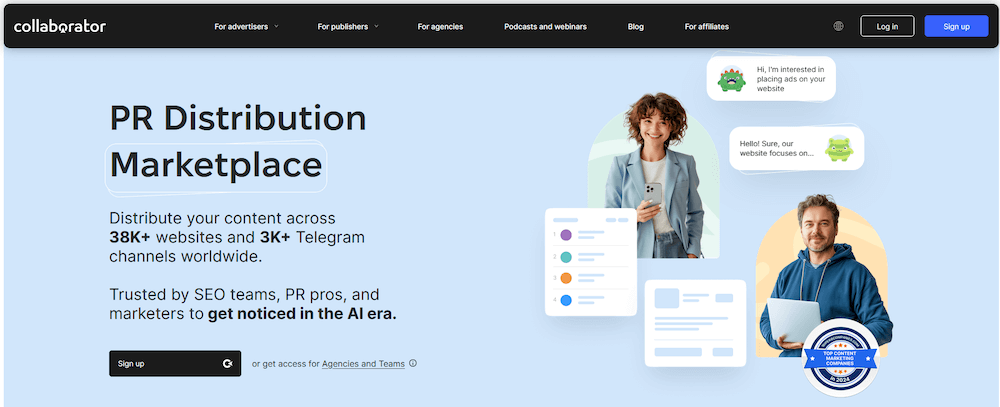
Collaborator is a PR distribution marketplace that connects you with real websites for native article placement. No fake traffic, no shady networks. If you want backlinks and visibility that hold up, this is where to look.
Key features:
- 38,000+ verified sites and 3,282+ Telegram channels
- Convenient filters with over 40 parameters (DA, DR, TF, organic traffic, geo-breakdown)
- Transparent pricing and direct communication with publishers
- Master account for managing multiple projects for agencies and teams
- Manual moderation of each platform
- Fast placement
Pros:
- Ahrefs, Moz, Majestic, Serpstat, Google Search Console and Google Analytics traffic data
- Niche filters save you hours of manually searching, negotiating, and analyzing sites
- 3-month guarantee for free
- Submit your own articles or order copywriting services directly from the publishers.
- Everything happens inside one dashboard
- Easy to build lasting partnerships
- Fast support and clean UX
- Trusted by SEOs and PR teams
Cons:
- Requires upfront content or a brief (some publishers offer article writing)
- Publishers set their own prices
Pricing:
- Pay-per-placement
- Article price set by each publisher
- Low platform fees
User reviews: 4.8/5
Outbrain

Outbrain places your content as native recommendations across major media outlets, appearing in boxes such as «You might also like…».
Key features:
- Native ad placement
- Audience targeting by interest
- Real-time performance data
- Content A/B testing
Pros:
- Gets you onto premium sites
- Easy to scale campaigns
- Solid reach for long-form content
- Simple dashboard to track results
Cons:
- Traffic quality can vary
- Doesn’t suit every niche
- Headlines matter more than content
- May need trial-and-error to get results
Pricing:
- Cost-per-click model
- Minimum campaign: $20/day
User reviews: 3.4/5
Taboola
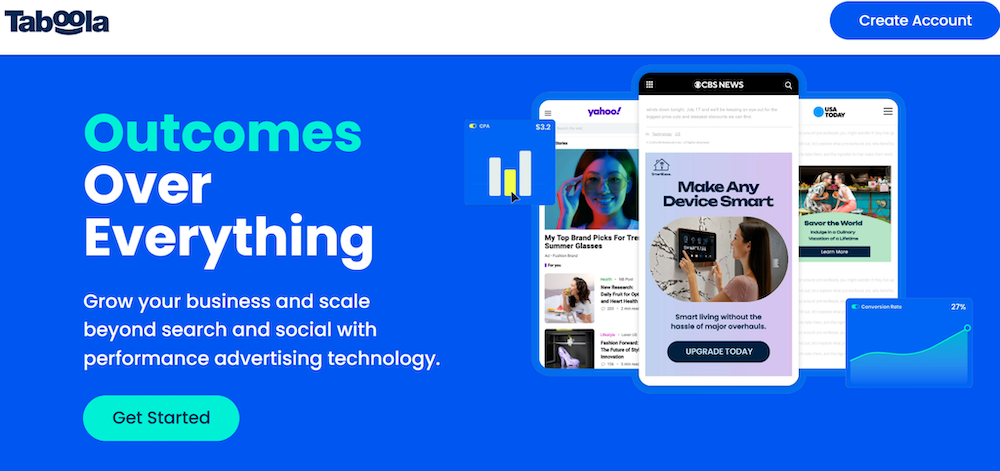
Taboola works similarly to Outbrain. It can place content recommendations on news sites and blogs. It’s known for its reach and speed. You’ll get clicks quickly if the headline hooks.
Key features:
- Large publisher network
- Predictive targeting
- Built-in content editor
Pros:
- Fast content amplification
- Huge potential reach
- Video content works well here
- Flexible targeting settings
Cons:
- Clickbait-style headlines perform better
- Bounce rates can be high
- Takes time to optimize
- Not ideal for niche audiences
Pricing:
- CPC pricing
- Starts around $10–20/day
User reviews: 2.9/5
Multi-Channel Distribution Tools
Sometimes posting on one platform isn’t enough. Multi-channel tools help you stay active across social, email, and blogs without jumping between ten tabs. If you’ve got more than one audience to reach, these tools help you keep everything moving in sync.
Hootsuite
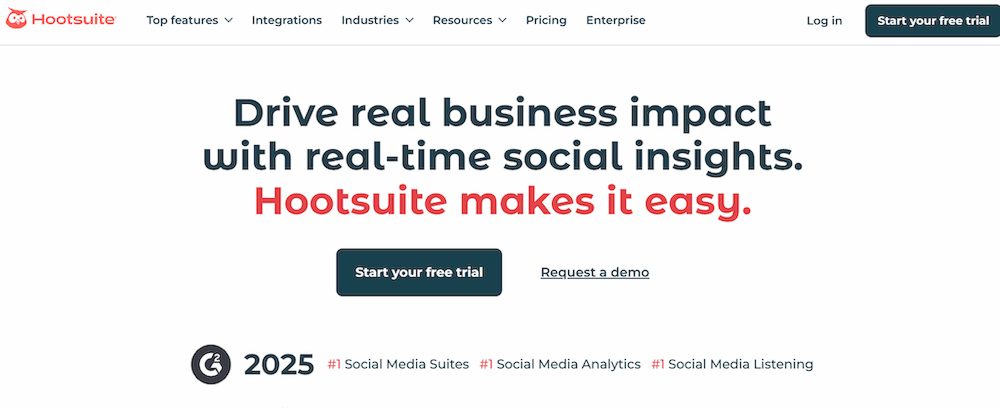
Hootsuite lets you run multiple social media accounts from one place. You can plan posts, answer messages, check stats, and stay on top of everything without logging in and out all day.
Key features:
- Dashboard for all major platforms
- Team collaboration tools
- Social listening and analytics
Pros:
- Great for large teams
- Saves time on busy days
- Built-in reply and inbox system
Cons:
- The interface feels a bit crowded
- The monthly cost adds up quickly
- Learning curve for new users
Pricing:
- Professional: from $99/month
- Team: from $249/month
- Enterprise: custom pricing
User reviews: 4.2/5
Buffer
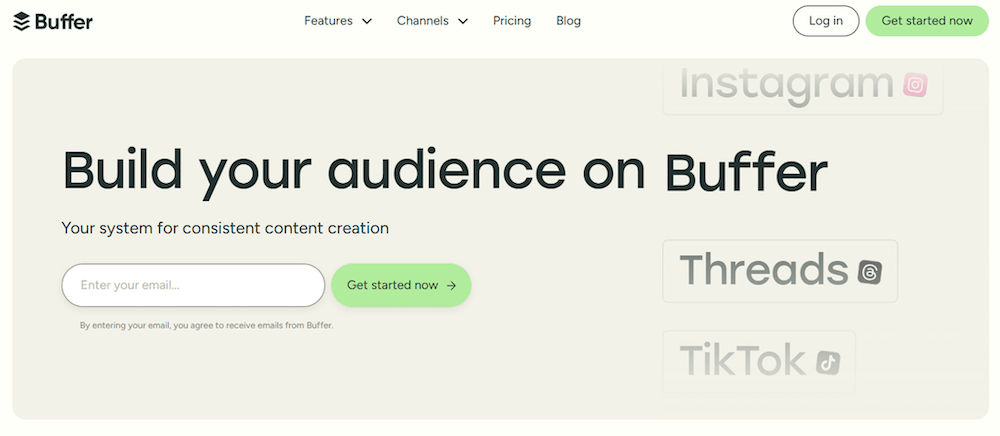
Buffer focuses on simplicity. It’s built for people who want to queue up posts, check what’s working, and get on with their day. Clean, fast, and low-stress.
Key features:
- Easy post scheduler
- Instagram first comment tool
- Link tracking
- Quick performance overview
Pros:
- Very beginner-friendly
- Light, clean interface
- Good for solo marketers
Cons:
- No advanced social inbox
- Lacks deep analytics
- Doesn’t support all platforms equally
- Basic features in the free plan only
Pricing:
- Free plan for 3 channels
- Essentials: from $6/month per channel
- Team: from $12/month per channel
- Agency: from $120/month
User reviews: 4.3/5
CoSchedule
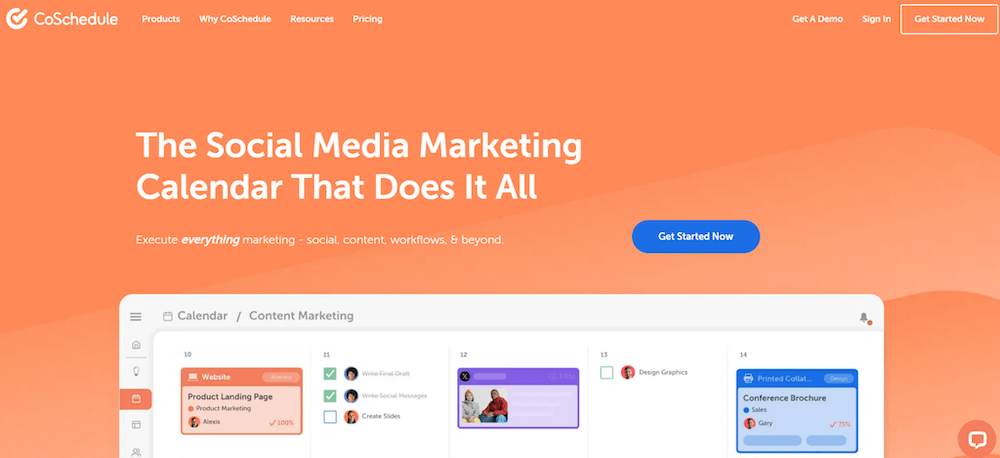
CoSchedule is your marketing calendar, blog planner, and task manager rolled into one. If you want to map things out clearly, it’s got your back.
Key features:
- Drag-and-drop content calendar
- Blog and campaign planning tools
- Social automation
- Team task assignments
Pros:
- Keeps everything in one place
- Great for editorial workflows
- It lets you plan weeks ahead
Cons:
- More useful for blogs than social-only teams
- Can feel heavy for small projects
- Some setup is required to get going
- Not ideal if you just want to post quickly
Pricing:
- Free Marketing Calendar: limited features
- Pro: from $29/month per user
- Marketing Suite: custom pricing
User reviews: 4/5
Content Distribution Platform Comparison Matrix
Let’s stop for a second and lay things out side by side. You’ve seen the tools and read the pros and cons, but how do they stack up regarding price, features, and flexibility? Here’s where you get to see the full picture without digging through ten tabs.
Pricing Comparison: Free vs Paid Plans
Some platforms let you get started for free and grow from there. Others need a budget right out of the gate. We have sorted the platforms by pricing models to make it easy for you to choose the tool that suits your goals.
Free plan available (with upgrades):
- Twitter/X
- YouTube
- Mailchimp
- HubSpot
- Buffer
- CoSchedule
Pay-per-use (no subscription):
- Collaborator
- Outbrain
- Taboola
Paid subscription only:
- Hootsuite
Feature Comparison: Core Capabilities
Let’s not overthink it, just look at who does what. These are the core strengths you should know before jumping in.
| Platform | Scheduling | Analytics | Native Publishing | Paid Distribution |
| Basic tools | ✔️ | ✔️ (articles) | ✔️ | |
| ✔️ | ✔️ | ✔️ | ✔️ | |
| Twitter/X | ✔️ | ✔️ | ✔️ | ✔️ |
| ✔️ (via Meta) | ✔️ | ✔️ | ✔️ | |
| YouTube | ✔️ | ✔️ | ✔️ | ✔️ |
| Mailchimp | ✔️ | ✔️ | ❌ | ❌ |
| HubSpot | ✔️ | ✔️ | ❌ | ❌ |
| Outbrain | ❌ | ✔️ | ❌ | ✔️ |
| Taboola | ❌ | ✔️ | ❌ | ✔️ |
| Collaborator | ✔️ via Direct Communication | ✔️ | ✔️ | ❌ (organic only) |
| Hootsuite | ✔️ | ✔️ | ❌ | ❌ |
| Buffer | ✔️ | Basic | ❌ | ❌ |
| CoSchedule | ✔️ | Basic | ❌ | ❌ |
Integration Capabilities Analysis
Let’s be honest! If the tool doesn’t play nice with the rest of your stack, it slows you down. Now, we suggest you take a look at which platforms plug in easily.
- HubSpot connects with everything from Google Ads to Slack and Shopify
- Mailchimp works well with CRMs, Shopify, and Google Sheets via Zapier
- CoSchedule integrates with WordPress, Google Docs, and HubSpot
- Collaborator has Ahrefs, Serpstat, Google Search Console and Google Analytics sync
- Buffer and Hootsuite both work with Canva, Dropbox, and Bitly
- LinkedIn, Instagram, Facebook, and Twitter/X can connect through Meta tools or third-party dashboards, but they don’t offer deep native integrations.
- Outbrain and Taboola mostly run as standalone platforms, so don’t expect much on the integration side.
How to Choose the Right Content Distribution Platform
You’ve got the tools laid out in front of you. Now what? You need to match the platform with your business size, your niche, and the kind of content you make. Let’s walk through what matters.
Business Size Considerations
If you are just starting out, start with something simple, affordable, and easy to handle. You can always scale later. For bigger teams, look for tools that let people work together without stepping on each other’s toes.
For small teams:
- Buffer or Mailchimp
- Collaborator for content placement
For growing businesses:
- Hootsuite or HubSpot
- Multi-channel dashboards with planning features
For agencies or enterprises:
- CoSchedule Suite
- Paid syndication (Taboola, Outbrain)
- CRM + Distribution in one (HubSpot)
Industry-Specific Platform Recommendations
Different fields move at different speeds, and audiences hang out in different places. You don’t need to be everywhere. Just be where your people actually are.
B2B vs B2C Distribution Strategies
B2B:
- Focus on LinkedIn and email
- Use Collaborator for niche publications
- Lean into long-form + whitepapers
B2C:
- Tap into Instagram and Facebook
- Video on YouTube works well
- Short, punchy content performs best
E-commerce Content Distribution
Here’s where visuals and quick links matter. Think product drops, reviews, launches, and updates.
Best picks:
- Instagram Reels
- YouTube Shorts
- Facebook Shops
- Email promos via Mailchimp
SaaS Content Distribution Strategies
Trust and clarity are key. You’ll need to explain, not just show. Plan ahead, publish often, and follow up smartly.
Strong options:
- LinkedIn for lead gen
- Blog + Collaborator combo
- HubSpot for full-funnel tracking
- Video explainers on YouTube
Content Type Optimization by Platform
Each platform has its own rhythm. Don’t drop the same thing everywhere.
Quick guide:
- Long reads → Blog + LinkedIn
- Product demos → YouTube
- Quotes/stats → Twitter/X
- Image carousels → Instagram
- Case studies → Collaborator
Video Content Distribution Strategy
Video is flexible, but don’t throw it all on one platform. Break it down, slice it up, and reuse it smartly.
Try this flow:
- Full video → YouTube
- Highlights → LinkedIn
- Clips/Reels → Instagram, Facebook
- Script → turned into blog post
Blog Content Syndication Approach
You wrote it. Now let’s spread it. But do it with care. Don’t chase low-quality backlinks.
Best practices:
- Submit your content to quality blogs with Collaborator
- Republish on Medium/LinkedIn
- Email to your list
- Use Outbrain for a paid boost
Visual Content Distribution Plan
Visuals stop the scroll only when they feel right for the platform.
Go-to places:
- Infographics → Pinterest, blogs
- Product photos → Instagram
- Slide decks → LinkedIn
- GIFs → Twitter/X
ROI Analysis: Measuring Content Distribution Success
You don’t do all this just to stay busy, do you? At some point, you need to stop and check. Does it work? Finally, we got to another key issue. We are going to talk about ROI measurement in content distribution. It’s time to break it down and look at the numbers that really matter.
Key Performance Indicators (KPIs) for Content Distribution
Don’t get lost in vanity metrics. Focus on the ones that show movement toward signups, purchases, or leads. What should you keep an eye on?
- Click-through rate (CTR) – Are people even curious?
- Bounce rate – Do they stick around or drop out?
- Time on page – Did they read or just skim?
- Conversions – Did they do something?
Set your KPIs early. Otherwise, you’ll end up chasing numbers that look good but mean nothing.
Attribution Modeling for Multi-Channel Distribution
Let’s say someone finds your brand on LinkedIn, clicks an Outbrain ad a week later, and finally signs up after reading your blog. Who gets the credit? That’s where attribution comes in. It helps you figure out which touchpoint pushed the person over the line.
Most common models:
- First-touch – Credit goes to the first visit
- Last-touch – Only the final click counts
- Linear – Split equally across all steps
- Time-decay – More weight on recent actions
Use what fits your goal. If you’re testing top-of-funnel reach, first-touch tells you a lot. If it’s about closing deals, look closer at last-touch or time-decay.
Cost-Per-Acquisition Analysis by Platform
Here’s the deal: some channels bring leads cheaper, some bring leads better. You can’t just throw money around and hope for the best.
To figure it out, compare:
- Ad spend vs. conversions
- Publishing fees vs. leads
- Total cost per signup/sale
- Lifetime value (LTV) of users by source
Don’t forget to factor in time. If one channel takes way more hours to manage for the same return, it’s not “free.” Time is part of the cost too.
Advanced Content Distribution Strategies
Once you’ve got the basics down, it’s time to level up. This is where you stop just publishing and start squeezing more value from what you already have. With the right tweaks, one piece of content can work harder, go further, and speak to more people in the right way.
Cross-Platform Content Repurposing
Don’t let a good idea live only once. If you’ve put time into a guide, video, or case study, break it up and spread it out. Turn blog posts into LinkedIn carousels. Slice up videos for Reels or Shorts. Quote yourself on X.
Ideas to try:
- Long article → email series
- Podcast episode → infographic
- Case study → LinkedIn post + blog
- Webinar → blog post + 1-minute clips
Timing and Frequency Optimization
When you post matters, so does how often. Too much? People tune out. Too little? They forget you exist.
What helps:
- Check platform-specific peak times
- Space out posts (don’t flood)
- Repost top content every few months
- Use A/B timing tests for email
Audience Segmentation for Distribution
One message doesn’t fit all. You’ve got people at different stages: some just curious, some ready to buy. Don’t treat them the same.
Start by breaking down:
- Cold vs warm vs returning users
- B2B leads vs individual shoppers
- Industry-specific interest
Content Distribution Automation
You don’t have to do it all by hand. Automation saves time, but only if you set it up smart.
Try automating:
- Social media queues (Buffer, Hootsuite)
- Welcome emails and sequences (Mailchimp, HubSpot)
- Content republishing (RSS to social)
- Lead scoring and follow-up
Future of Content Distribution: 2025 Trends and Beyond
The way we share content is changing fast. Tools are getting smarter, formats are shifting, and the old «post and hope» routine won’t hold up much longer. If you want to stay visible and relevant, you’ll need to move with it, not after it.
AI-Powered Distribution Optimization
You’ve probably already felt that platforms are learning faster than ever. AI picks headlines, adjusts post times, and even suggests formats based on how your audience acts. These tools help you spot patterns you’d miss on your own. You can test headlines in real time or find the right time to post without guessing.
Voice and Audio Content Distribution
Not everyone scrolls. Some people listen. And if your strategy doesn’t include voice, you’re missing part of the room. Podcasts, smart speakers, and short-form audio are carving out real space in the content world.
Where to show up:
- Podcast interviews
- Branded mini-series
- Alexa briefings
- Audio blogs on Spotify or Apple
- Voice-enabled search content
Web3 and Decentralized Content Distribution
This one’s still early, but worth keeping on your radar. Web3 is about creators owning their work, not renting space from platforms. Imagine publishing a piece and knowing exactly where it travels, who shares it, and even earning from each view without ads. Tools like Lens, Mirror, and other blockchain-powered platforms are trying to make that real.
Content Distribution Security and Compliance
If you collect data, use automation tools, or publish on third-party platforms, you need to make sure everything’s above board. One slip, and you lose trust. Moreover, you could look at legal trouble. So, let’s talk about how to keep things clean, safe, and aligned with the rules.
Data Privacy Considerations
People want control over their data, and so do regulators. You need to make it easy for users to opt in, opt out, and understand what you’re doing with their info. That means clear privacy policies, cookie notices that actually work, and storage practices that don’t leave gaps.
Content Security Best Practices
There’s no point in building a great campaign if someone can hijack it, copy it, or crash your site in the process. Content security often gets ignored until it doesn’t.
What should you lock down?
- Use HTTPS on every single page
- Keep your CMS and plugins up to date
- Back up your blog and email lists regularly
- Limit user permissions on distribution tools
- Monitor shared links for phishing clones
- Scan your embedded forms for vulnerabilities
- Don’t hardcode tracking into public URLs
These steps don’t take long, but skipping them could cost you way more than just views.
Frequently Asked Questions About Content Distribution
How much should I budget for content distribution?
Start small with $100–$300/month, and if you’re focused, it can go a long way. Scale only when you see it working.
What’s the best platform for my industry?
It depends on where your audience hangs out. If you’re not sure, try two channels and see what clicks.
How do I measure content distribution ROI?
Track what people do after they click. Look at leads, signups, or whatever moves your goal forward.
Should I use free or paid distribution platforms?
Try free first, but don’t expect miracles. A small paid boost often helps good content get noticed faster.
How often should I distribute content?
A few times a week is plenty. Show up regularly, and stay useful.
Conclusion
So here we are. You’ve seen the tools, the strategies, the traps to avoid, and maybe your head’s buzzing a bit. That’s normal. Content distribution is like a rhythm you find and then fine-tune over time.
Don’t try to nail everything at once. Pick one channel, one tweak, one habit. See how it plays out. Then build from there. Your content already has value. Now, it just needs to be on the right path to travel. And if something flops? Rethink it, repurpose it, and send it out again. You don’t start from scratch; you get smarter with every round.
Related Articles


[…] top distribution tools like those found in leading content distribution platforms can also boost your reach a lot more than just organic […]